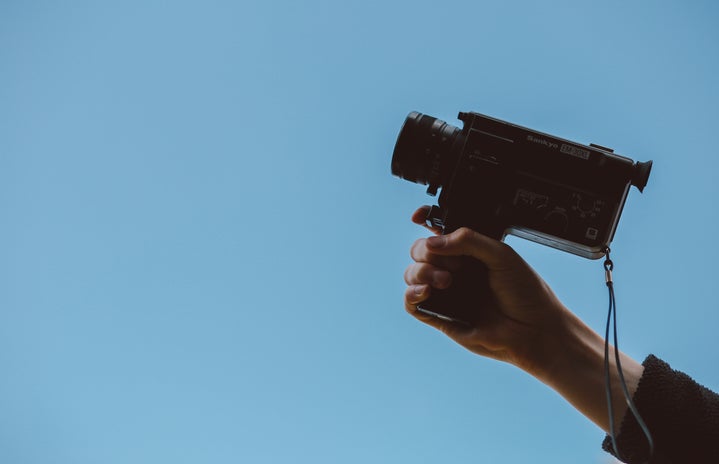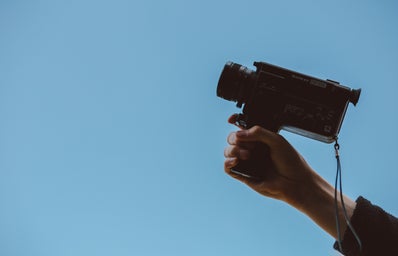Even though women represent the majority of moviegoers, Hollywood is still very sexist towards female film professionals and characters
Despite its over a hundred years of existence, the film industry remains one of the most blatantly sexist areas for a woman to work in. The industry has indeed evolved when it comes to misogyny, as movements such as #MeToo acquired force and fought gender oppression in Hollywood, but this has not been enough.
The sexism is showcased most emphatically in famous film awards, such as the Academy Awards, a 93-year-old festival in which only one woman has ever won as best director – The Hurt Locker’s (2008) Kathryn Bigelow. Furthermore, in 2019, 85% of Hollywood movie directors were male, being only 15% women, according to Women and Hollywood. This number is already double that of the previous year, nevertheless way too modest.
This problem, however, goes well beyond the lack of women behind the cameras, for the number of male speaking characters still surprisingly exceeds that of women, who are clearly underrepresented on the big screens. Even though women represent the majority of moviegoers, they still represent only about 34% of speaking characters within the 100 top-grossing Hollywood films of 2019.
This absurdity becomes even worse when it comes to action films, being women only 28% of all speaking characters. This issue, however, becomes even more absurd when one takes a closer look at how those female characters are represented: as an object rather than a subject.
The vast majority of directors and authors who gain recognition within the industry are male, and as a consequence, cinema – a powerful tool encompassed by the Cultural Industry – comes to disseminate the view of men over the world, that is, the Male Gaze. Appropriately, women are represented under that same view, a misogynistic view, one which sees women as second to man.
- The Other and Self Theory
-
According to the main exponent within feminist theory, Simone de Beauvoir, women are “The Second Sex”, that is, under the Christian views of western society, woman is, by default, Other, whilst man is Self. As a result of that, women begin to be represented in films as nothing beyond an accessory to the male protagonist, without feelings, thoughts, and oftentimes, even words.
As the author of the theory of the Male Gaze, Laura Mulvey, describes through a psychoanalytical lens, humans are voyeuristic by nature. That is, people watch movies because they like to see themselves on screen, represented by someone that is not themselves. The same goes for men, especially when it comes to the sexual idealizations and fantasies which one projects onto characters on screen.
The male audience sees themselves in the main character of a movie, hence their idealized woman should also be there. This idealized version of women is what formulates the problem of female representation within the film industry. As women are represented under generalizations and a sexualized gaze, they become an object for both the main character and the audience.
This objectification is materialized as female characters display two levels of existence, “as erotic object for the characters within the screen story, and as erotic object for the spectator within the cinema auditorium.”
In practice, female characters start being formulated according to molds of women who have no ability of thought or feeling detached from those of their male counterpart, all their actions are based on the male’s needs and desires, and when she does not fulfill those wishes she is depicted as a manipulative or crazy woman who inevitably ruins the male’s life – solely because she is a woman. Classic characters such as Julia Roberts’ Vivian in Pretty Woman (1990) or Kirsten Dunst’ Claire in Elizabethtown (2005) or even Merylin Monroe’s Sugar in Some Like it Hot (1959) fall under those dynamics, being represented as unidimensional characters in a world ruled by male desire.
- The Bechdel Test
-
An easy way to see how poorly women are represented in Hollywood is the Bechdel Test. Despite not being the absolute best feminist measurement of female representation in movies, the test asks whether a film presents at least two named women who talk to each other about something other than a man.
The test was idealized by cartoonist Alison Bechdel, and has its roots in one of Virginia Woolf’s essays about women in literature, in which she questions “All these relationships between women, I thought, rapidly recalling the splendid gallery of fictitious women, are too simple. And I tried to remember any case in the course of my reading where two women are represented as friends. They are now and then mothers and daughters. But almost without exception, they are shown in their relation to men. It was strange to think that all the great women of fiction were, until Jane Austen’s day, not only seen by the other sex, but seen only in relation to the other sex. And how small a part of a woman’s life is that.”
Films such as The Lord of the Rings Trilogy (2001-2003), The Imitation Game (2014), Avatar (2009), The Social Network (2010), The Avengers (2013), and many more fail the test.
- The Female Gaze
-
Several women have been trying, for the past sixty years, to depict women as they are in reality: independent individuals who go through the same, if not much more, than men, having much to show to the world through cinematographic art.
When represented by women, female characters gain tridimensionality, becoming the Self rather than the Other, and illustrating human existence as it is. Films made by women such as Little Women (2019), Daisies (1966), The Virgin Suicides (1999), Cléo de Cinq à Sept (1962), Clueless (1995), and Persepolis (2007) were made in praise of women and of their experience on earth, films which everyone should watch in order to revert the way women are seen and represented in film as well as in real life, for we all know that art is, in fact, reality and vice versa.
———————————————————————
The article above was edited by Carolina Grassmann.
Liked this type of content? Check Her Campus Casper Libero home page for more!



